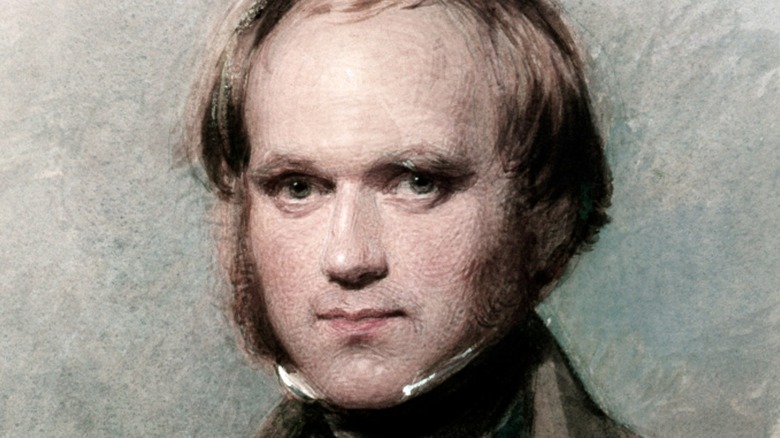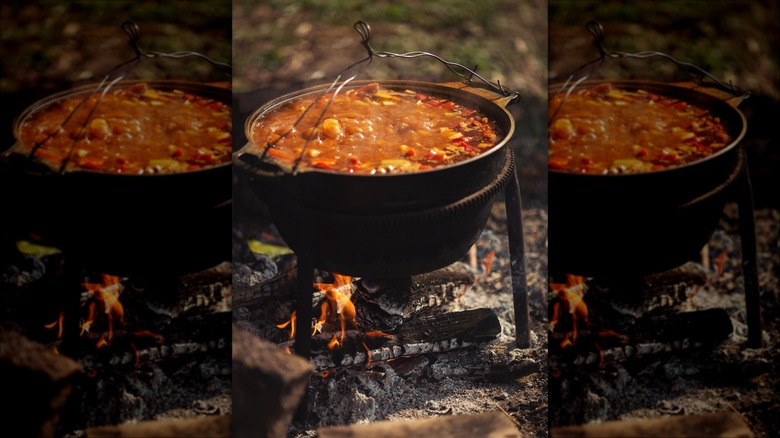Charles Darwin Was An Exceptionally Adventurous Eater
Charles Darwin was the Victorian version of a renaissance man — he was a man of science, yes, but rather than staying holed up in a laboratory he set off on far-flung expeditions to test his hypotheses and formulate his theory of evolution. He then wrote and lectured about the topic, drawing ire from biblical literalists that persists to this day. Clearly, Darwin was a fearless man, but one lesser-known fact about him is that this also extended to his eating habits, which by all accounts might best be termed adventurous. It seems he'd try just about anything once, and if he liked it, he'd go back for more.
Back in his college days, Darwin belonged to a society called the Glutton Club where members dined upon such unfamiliar fare (then and now) as hawks and owls. However, the latter birds were evidently too stringy to be palatable. On his later round-the-world voyages, he consumed such delicacies as armadillo, giant tortoise, iguana, puma, and rhea. The latter led to a major "whoops" moment since he realized that he hadn't saved a specimen, so he had to scoop up the leftovers for later reconstruction by a taxidermist. His favorite dish, however, was an unnamed rodent of unusual size. (20 pounds, give or take a few ounces.) As he said of this ROUS (via Britannica), it was "the best meat I ever tasted."
Darwin's not the only scientist to have noshed on his discoveries
According to some biology students, it's considered a time-honored tradition to chow down on whatever organism you're studying, and yes, that even applies to entomologists (although hopefully not to bacteriologists). The more fortunate among them dine on berries, fish, or venison, while other inquiring minds get to find out what beetles, cicadas, and maggots taste like. (Here's a hint: You probably won't find them on the menu at even the most cutting-edge hipster bistro anytime soon.)
Perhaps the most epic voyage of gastronomic discovery, however, was undertaken by a group of paleobiologists who unearthed a 30,000-year-old frozen bison in Alaska in 1984 and sliced off a hunk to make it into a stew. Expedition leader R. Dale Guthrie described the meal as "delicious" and reported that it made nobody ill (via "Food History Almanac: Over 1,300 Years of World Culinary History, Culture, and Social Influence"). Not only was this discovery important for scientific reasons, but for culinary ones as well since it proved for once and all that recipes telling you leftovers can only be frozen for three months max are, well, full of Pleistocene bull.

